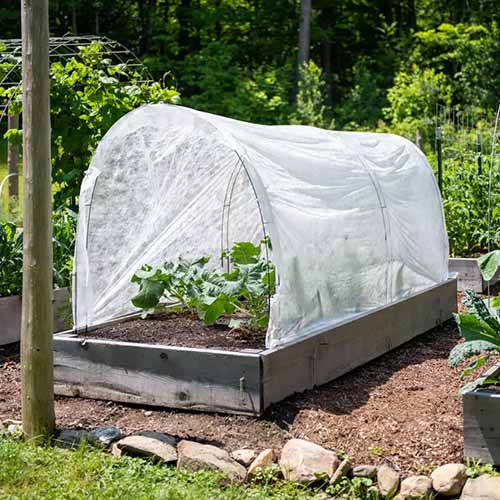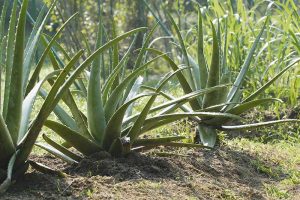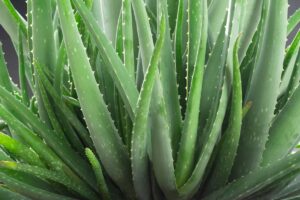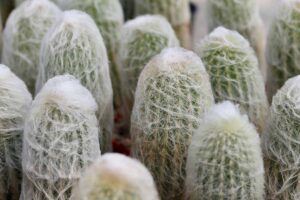The “it” girls of the houseplant world, succulents are laid back, diverse, colorful performers. What’s not to love?
Well, it just so happens that when summer fades and winter takes its place, these plucky worshippers of heat and sun need a different kind of TLC.
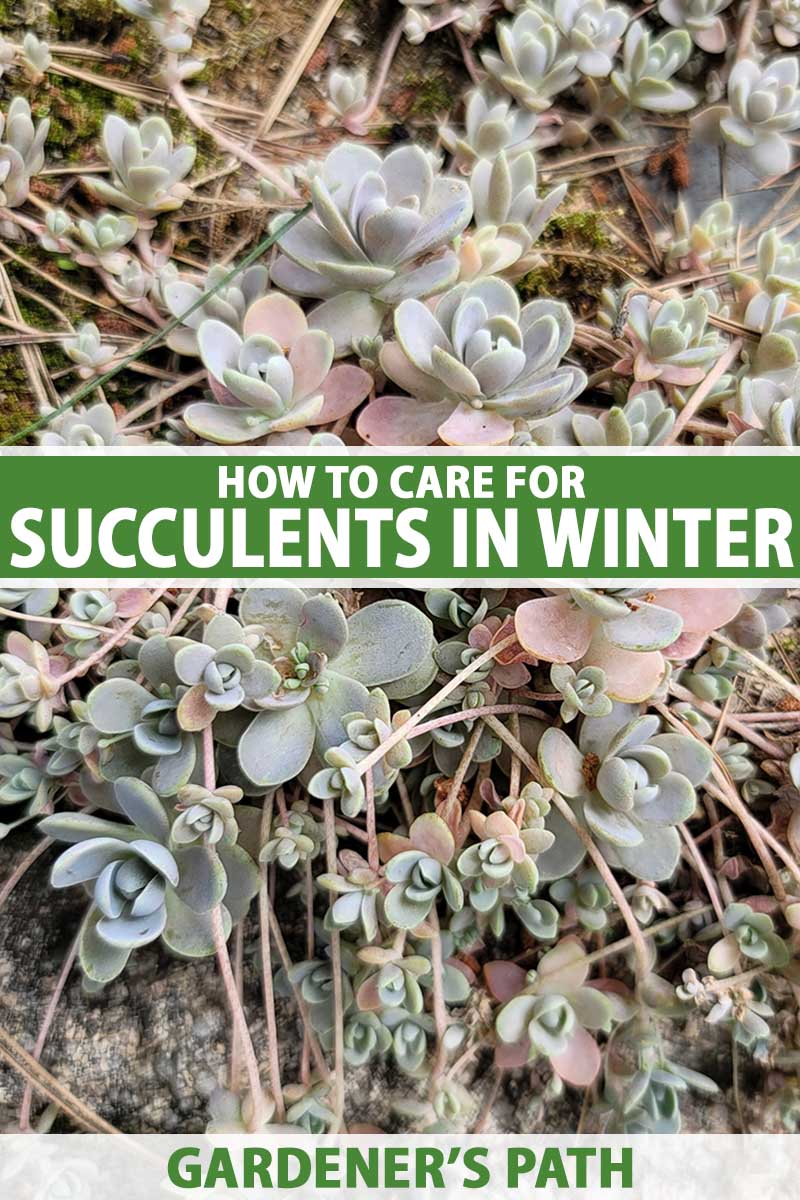
We link to vendors to help you find relevant products. If you buy from one of our links, we may earn a commission.
Lucky for us, their winter care is pretty straightforward, and requires just a few tweaks from their summertime routine.
For general information on how to care for and grow your own bevy of succulents, we’ve got you covered. Check out our comprehensive guide to growing succulents here.
In this guide, we’ll tackle the best techniques for overwintering your plants. Read on to find out more.
What You’ll Learn
Winter is coming… As indefatigable as a horde of undead zombies barreling towards your garden – “Game of Thrones,” anyone? – in almost every part of the world, the long, cold winter is an inescapable fact.
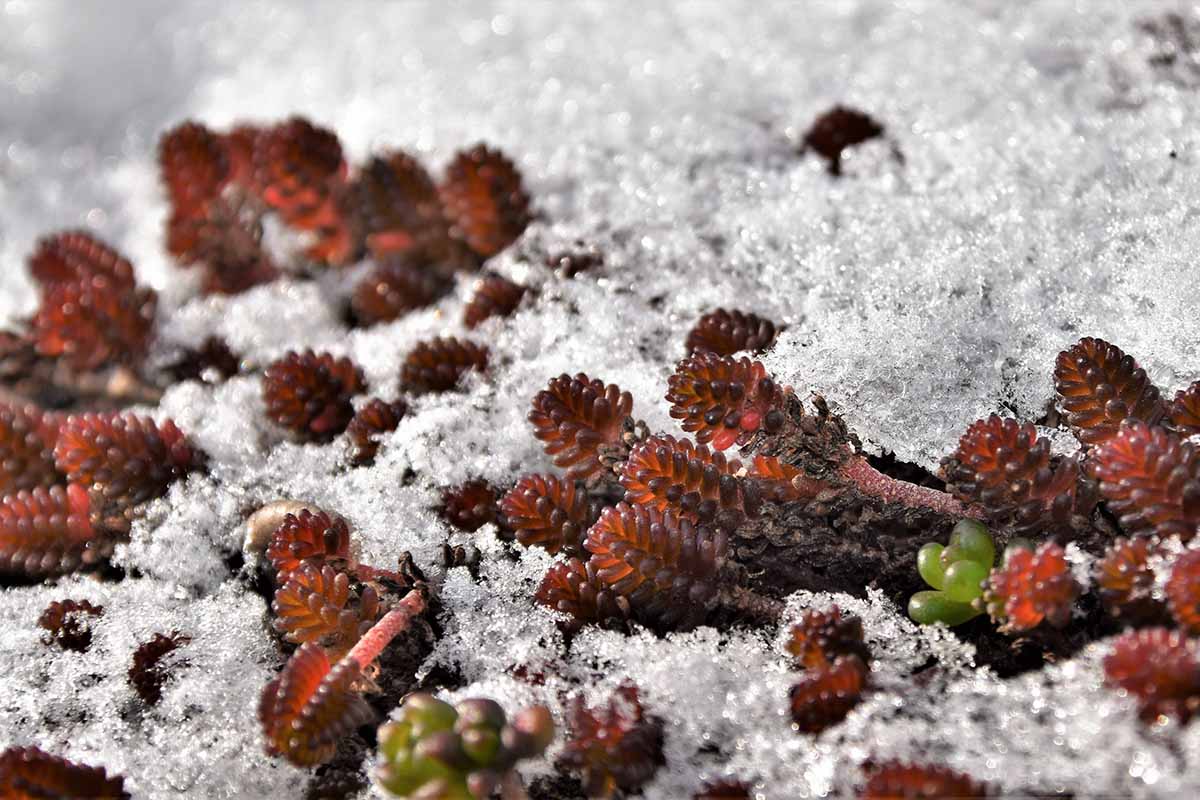
And although your potted plants can be easily whisked away to the warmth of the house, that doesn’t mean they’re impervious to the seasonal changes happening outdoors.
As winter approaches, not only does the amount of sunlight reaching the earth decrease, but the intensity of it lessens, too.
The air cools, the nights lengthen, and, accordingly, plant growth slows down.
What Does Winter Do to a Succulent?
As plants receive these climatic cues from the outdoors they enter a period of dormancy, or decreased growth if the winter period is not very severe.
Less sunlight means less photosynthesis, but it also means less heat, which is an important ingredient in plant growth. In short, plants need the sun and its warmth to grow, flower, set seed, and prosper.
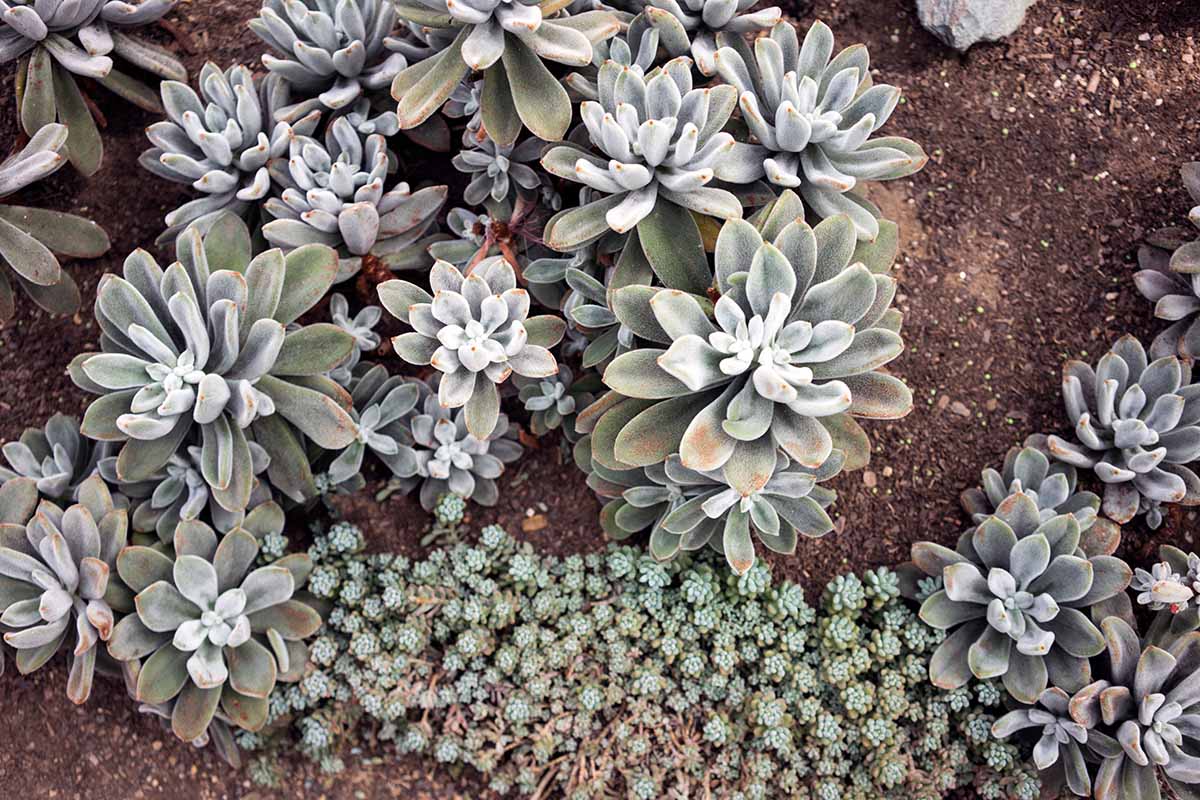
Succulents are lovers of sun and heat. Although some are miraculously adapted for cold weather with a coat of thick hairs or tough exterior skin, none of them like the dull, gloomy winter days that often characterize winter in the Northern Hemisphere.
When sunlight decreases, succulents can actually start to shed leaves or become etiolated – a fancy word which means long and stringy and skinny.
Insufficient light can eventually kill a succulent, especially if it’s suddenly brought from the warm and sunny, summery outdoors to shaded, more moderate temperatures indoors.
Read on to find out how to manage this seasonal transition and steward your succulents through the chilliest months of the year, and back into sunlit summer days.
Inside or Out?
The decision to move plants indoors is easily made based on your USDA Hardiness Zone.
If you’re Zone 6 or under, you have serious winters to contend with and should definitely shift all succulents, with a few exceptions, inside.
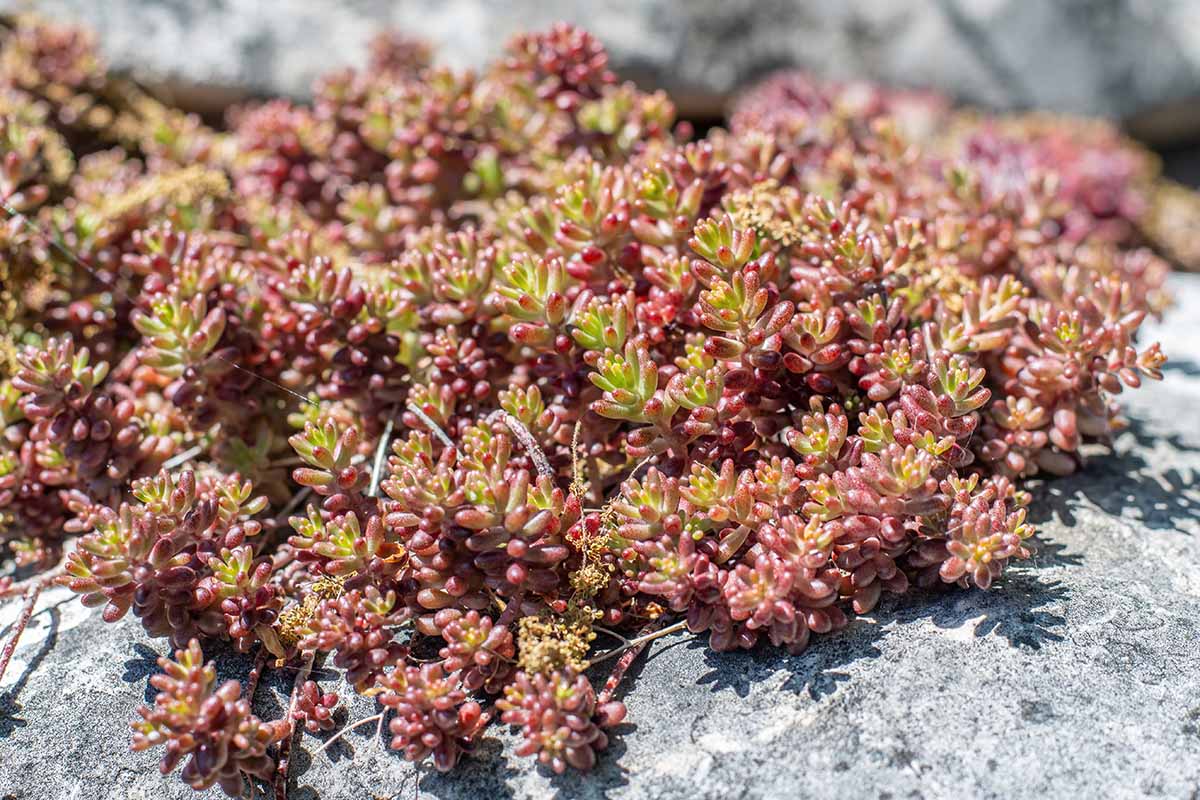
If you’re Zone 7 and up, find out what the minimum Hardiness Zone is for your specific species and variety.
Some, such as the euphorbias, will withstand winter weather just fine. The sedums, popular and widespread garden perennials, are hardy to Zone 3, for example.
A few succulents may be borderline hardy, or prone to windburn. These more sensitive species will benefit from protection such as horticultural fleece, or garden fabric, during winter.
This handy cloth has various monikers and comes in many sizes to accommodate your needs.
Purchase some for your garden from Gardener’s Supply Co.
Just as we mulch perennials in the fall, a layer of grit or gravel will help ensure good drainage around outdoor succulents and provide some insulation for the soil, so pile on an extra half an inch.
Moving Indoors
Once the weather begins to tilt winter-ward, make your move.
When nighttime temperatures start to dip into the 50s and that fall feeling sets in (think: shorter days, cool nights, quicker sunsets, later sunrises) it’s time to move pots inside.

Before you get cozy, however, you should always check for pests that could be a menace to your permanent houseplant community.
Give your outdoor plants a quick end-of-season physical.
If you spy any critters hiding, treat with a simple insecticide like Bonide brand insect-killing soap or, if the infestation is mild, you could try a rinse with the garden hose.
This mild insecticidal soap is excellent for exterminating a myriad of plant pests. It’s available at Gardener’s Supply Co.
To make sure no eggs are stowed away in the soil, change the substrate, making sure to use an appropriate soil mix for succulents.
A mix low in organic matter and high in material that allows the soil to drain quickly, such as sand, grit, or perlite, is ideal for these plants.
Remove any dead leaves or debris, too.
Sun and Heat
Succulents come from brightly lit environments, whether that be the craggy cliffs of a sweltering desert or the bald face of a windswept mountain. In short, they are not shade plants.
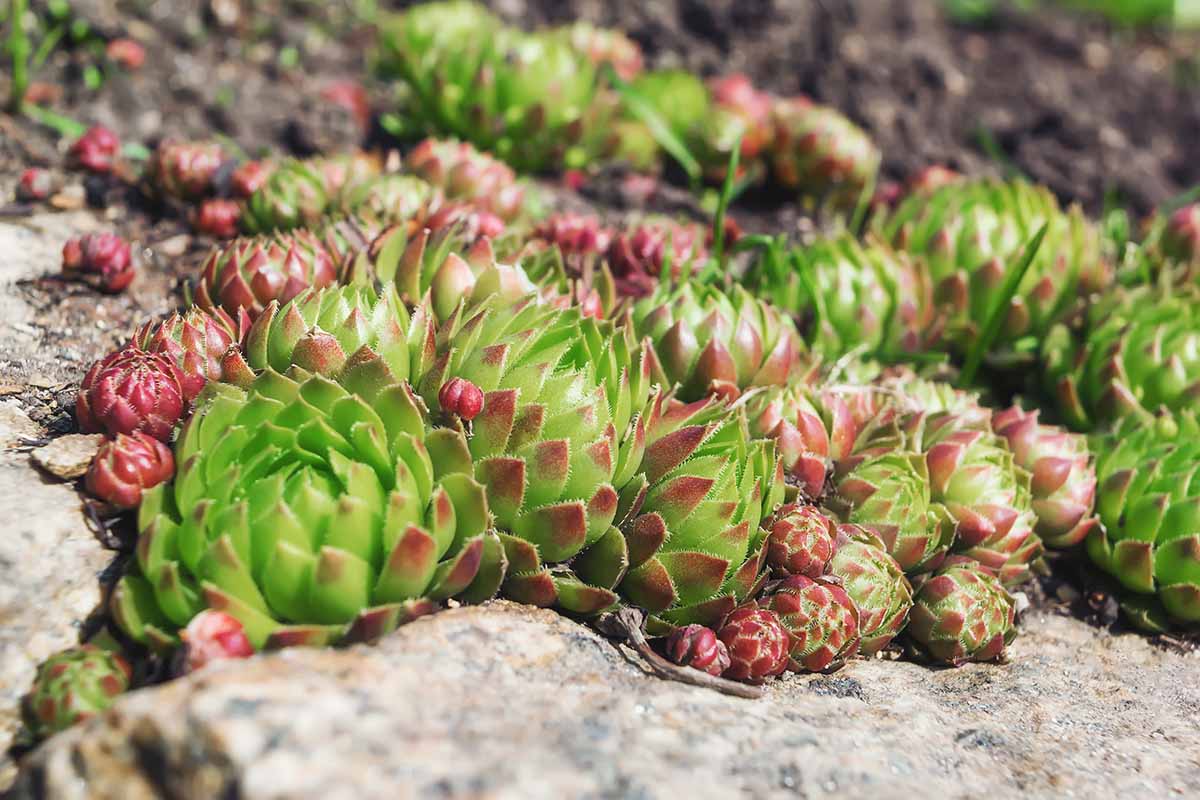
When moving your light-lovers indoors, make sure to place them in areas with as much sun exposure as possible.
Sunrooms, bay windows, and south-facing ledges are all good choices. Make sure your chosen perch is draft-free.
If you don’t have quite enough solar power within your home, many plant aficionados invest in grow lamps to get them through the darker parts of the year. These can utilize simple yet powerful fluorescent or LED bulbs. They even come in a range of funky colors.
Red typically promotes flowering, while blue stimulates growth. In the growing season you can get down and disco and experiment with different colors, but for wintertime, yellow and white lights are most appropriate.
Lucky for you, we’ve already done the hard work of deciding which grow lights are the industry’s stars. Read more about recommended grow lights in our guide.
Gardener’s Supply Co. offers numerous grow light choices, from the utilitarian to the sleek and sexy.
But remember, you don’t necessarily want to keep your plants trucking in summer grow-mode.
The decrease in sunlight and temperature prepares all green and growing things for a period of rest known as dormancy. It’s actually what they need to get ready to flower and flourish next year.
Keep nighttime temperatures cool – about 50°F is ideal, but be sure to go no higher than where you normally set your thermostat for your own comfort, and pay attention to how much you water. More on that below.
Water: Less Is More
To nudge your new house guests into dormancy, start to water them less frequently as soon as they’re indoors. Instead of thoroughly drenching the soil once a week, water deeply once a month, maybe even less often.
With less rapid uptake of both nutrients and water, succulents tend to get soggy and decay if they’re overwatered. Look for yellowing leaves as an early sign of root rot.
Check out our guide to preventing root rot in succulents for more info.
The golden rule of watering most kinds of plants – and definitely succulents – is to perform the finger stick test: press your finger into the soil up to the first knuckle.
If it is dry, water deeply until water runs out of the bottom of the pot. If it’s still moist, wait a little longer.
The aim of winter watering for succulents is the prevention of shriveling and leaf drop. This may take a time or two to learn and will vary from plant to plant.
Get more tips on watering succulents here.
Food: Is it Necessary?
Succulents are a hardy bunch and rarely need feeding except under a few specific circumstances.
If they’re root bound, stuck in the same pot year after year, or have just been through a period of prolific growth, give them a dose of succulent fertilizer, or a dilute feeding of a standard fertilizer with an equal balance of nitrogen, phosphorous and potassium (NPK).
As a general rule, houseplants do not need feeding during winter.
Fertilize once spring is well on its way and you’re ready to encourage new growth, which will be supported by increased sunlight.
Early-season feeding before your plants are receiving at least a full eight hours of direct sunlight again will encourage weedy, stringy growth.
Pest and Disease Control
With decreased air circulation, lower temperatures, and all-around less vigorous growth, plants become more susceptible to pests and disease.
Checking your pots prior to moving them indoors and switching out the soil will drastically lower the chances of marauding bugs attacking your plants, but even with the best intentions, things can go awry.
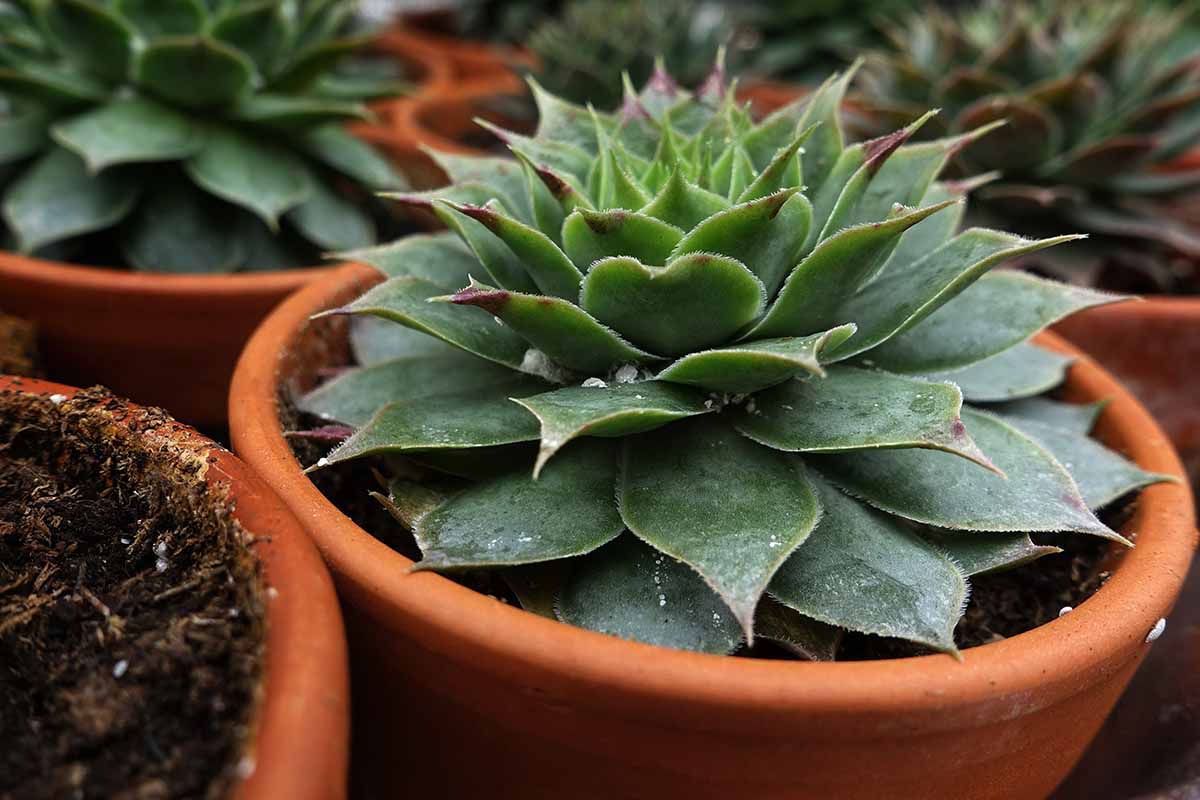
Many indoor pest problems can be fixed by addressing the root, no pun intended, of the problem.
Increased spacing between plants, lower humidity, and less erratic temperature fluctuations help prevent insect infestations and generally keep your potted photosynthesizers happier.
Once a week, perform a health inspection to make sure you catch infestations and diseases in their early, and often fixable stages.
Yellowing leaves, discolored blotches, soft tissue, cobwebbing, and of course, uninvited insects, are all signs your plant may need some doctoring.
Our guide to controlling mites might be helpful if you happen to find a cluster of these greedy creepy crawlies.
Scale and mealybugs can cause problems for indoor dwellers, too, but it’s nothing a little hand-picking or some leaf cleaning with rubbing alcohol can’t fix if caught early enough.
Winter Wonderland
In short, winter doesn’t have to put the kibosh on that generous green feeling summer is full of.
With a little careful watching, and some tender love and care, even the most dedicated sunlovers can thrive indoors.
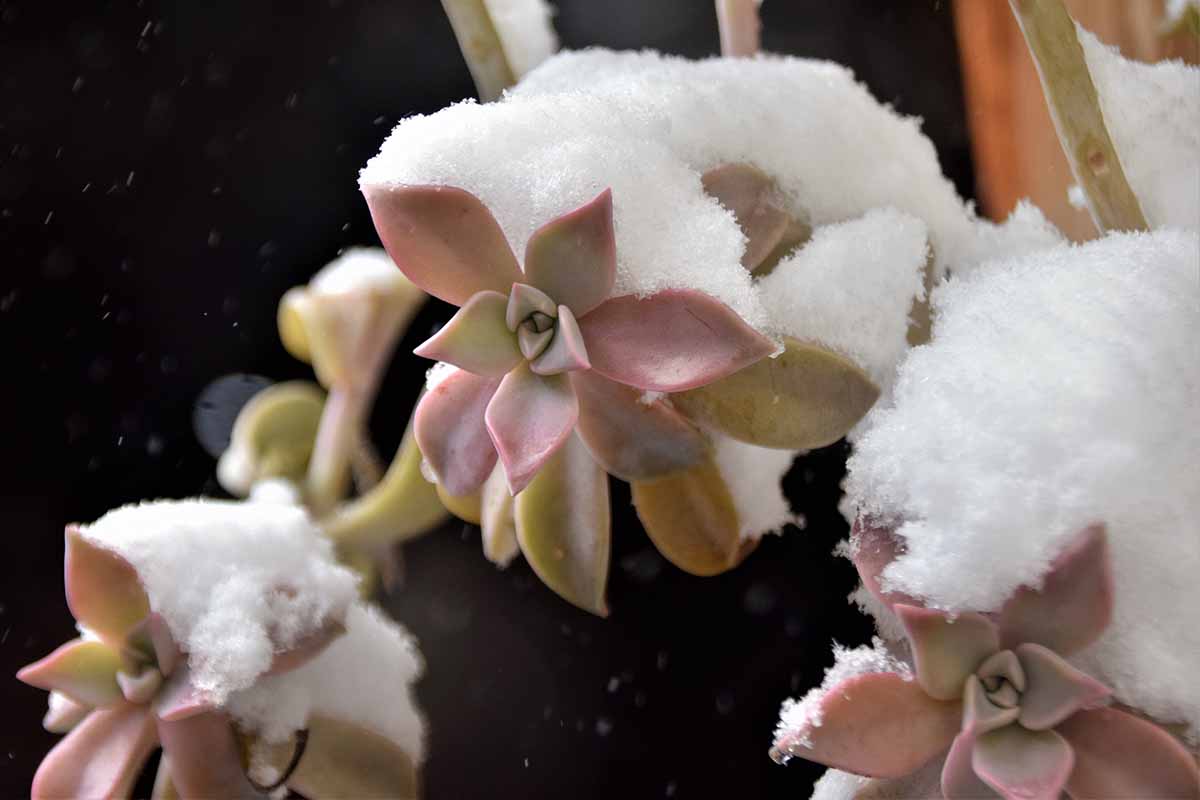
But remember, even though you feel passionate about your succulents, extra cherishing is not what they need. Less water, and less heat, is what they require for healthy winter living.
How do you manage your succulents in winter? Let us know in the comments section below!
When you’re ready to expand your collection of succulents, read more about everything from which species to select to how to establish them outdoors, and beyond. Now go! Get growing!
